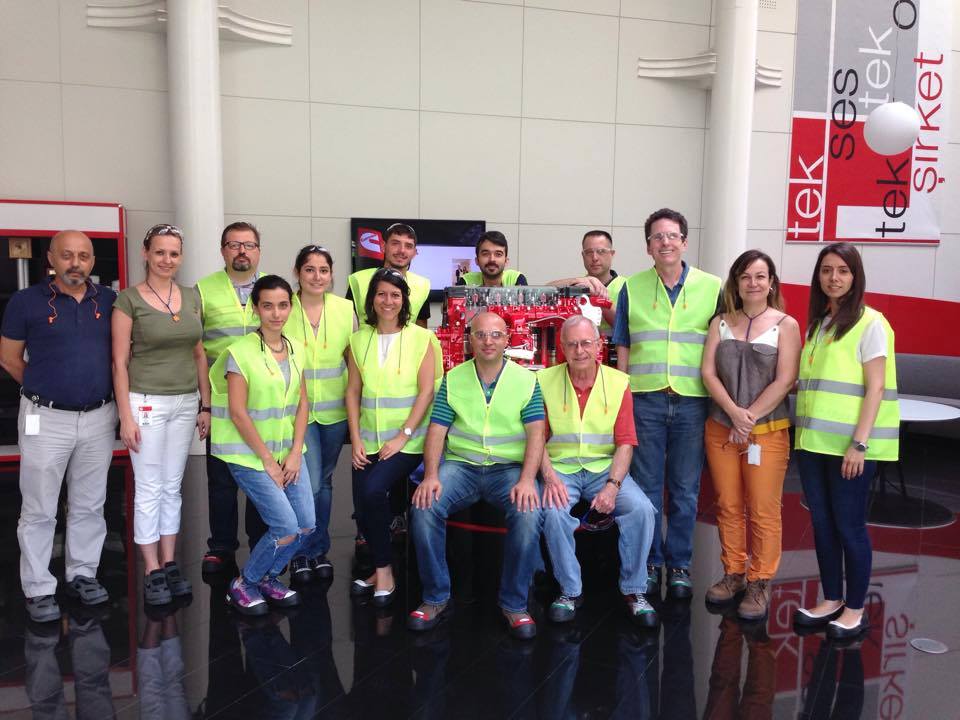
NIOSH and Auburn University have a history dating to the early 1970s, but the history of the Auburn University Department of Industrial and Systems Engineering safety and ergonomics program goes back to the late 1960s.
Tony Smith, professor emeritus of industrial and systems engineering, joined the department faculty in 1969 with the mission to develop ergonomics course offerings at the undergraduate and graduate levels.
Smith earned his undergraduate degree in industrial engineering from Georgia Tech in 1962 and immediately entered the industrial engineering graduate program. His master's thesis involved research in the area of work physiology. After completing the degree, he served his military tour of duty in the U.S. Army Human Engineering Laboratory monitoring surface-to-surface missile system ground support design and development. Smith entered the doctoral industrial engineering program at Purdue University in 1964. His dissertation research focused on human error prevention in occupational decision-making tasks.
Prior to Smith joining the department, the College of Engineering offered one undergraduate safety course which was not available to industrial engineering students. The department soon implemented three ergonomics courses through which Smith could teach.
Grady Cox was the department chair during this time and, thanks to his undergraduate degree in chemical engineering, had a strong perspective on occupational safety. He also had a strong safety leader in former department professor Louis B. Trucks.
Trucks graduated with a mechanical engineering degree from Auburn in 1941. However, his safety training came as a result of World War II. Trucks joined the Army and fought under General George Patton.
After the war, Trucks earned a master’s degree in mechanical engineering at Auburn and then worked as a safety engineer at Westinghouse in Pittsburgh before returning to Auburn to join the industrial and systems engineering staff as a professor.
There was a general consensus that the rapid industrial expansion needed to meet wartime needs created many safety hazards. It was evident these trends continued in the post-war economic expansion. The safety community needed a national program to oversee occupational safety, and this need was met with the signing of the Williams-Steiger Occupational Safety and Health Act by President Richard Nixon in 1970. This led to the creation of NIOSH in 1970 and the Occupational Safety and Health Administration (OSHA) in 1971.
NIOSH was responsible for completing the research to support the Occupational Safety and Health Act and was also responsible for providing the country with a steady flow of qualified safety personnel. NIOSH turned to the universities to do this and established the Education and Resource System. This system was constituted of a series of Educational and Resource Centers (ERCs) dispensed throughout the continental United States. The title was later revised to the Education and Research Centers.
Trucks was approached by NIOSH to develop an undergraduate occupational safety program at Auburn University. Trucks, along with Smith, worked with NIOSH to develop the safety option and submitted a grant proposal to NIOSH to fund the teaching of the courses and provide a stipend to recruit students.
NIOSH soon began to focus more on graduate-level education. An ERC was established in public health schools around the country, and these schools were encouraged to cooperate with engineering schools. An ERC was established in the School of Public Health at UAB, which partnered with Auburn University to create the Deep South Center for Occupational Health and Safety in 1982.
The NIOSH Education and Research Centers ensure that our nation has a sufficient supply of post-baccalaureate graduates entering occupational health and safety fields to carry out the Occupational Safety and Health Act. Auburn applies for approval of the NIOSH grants every five years.

